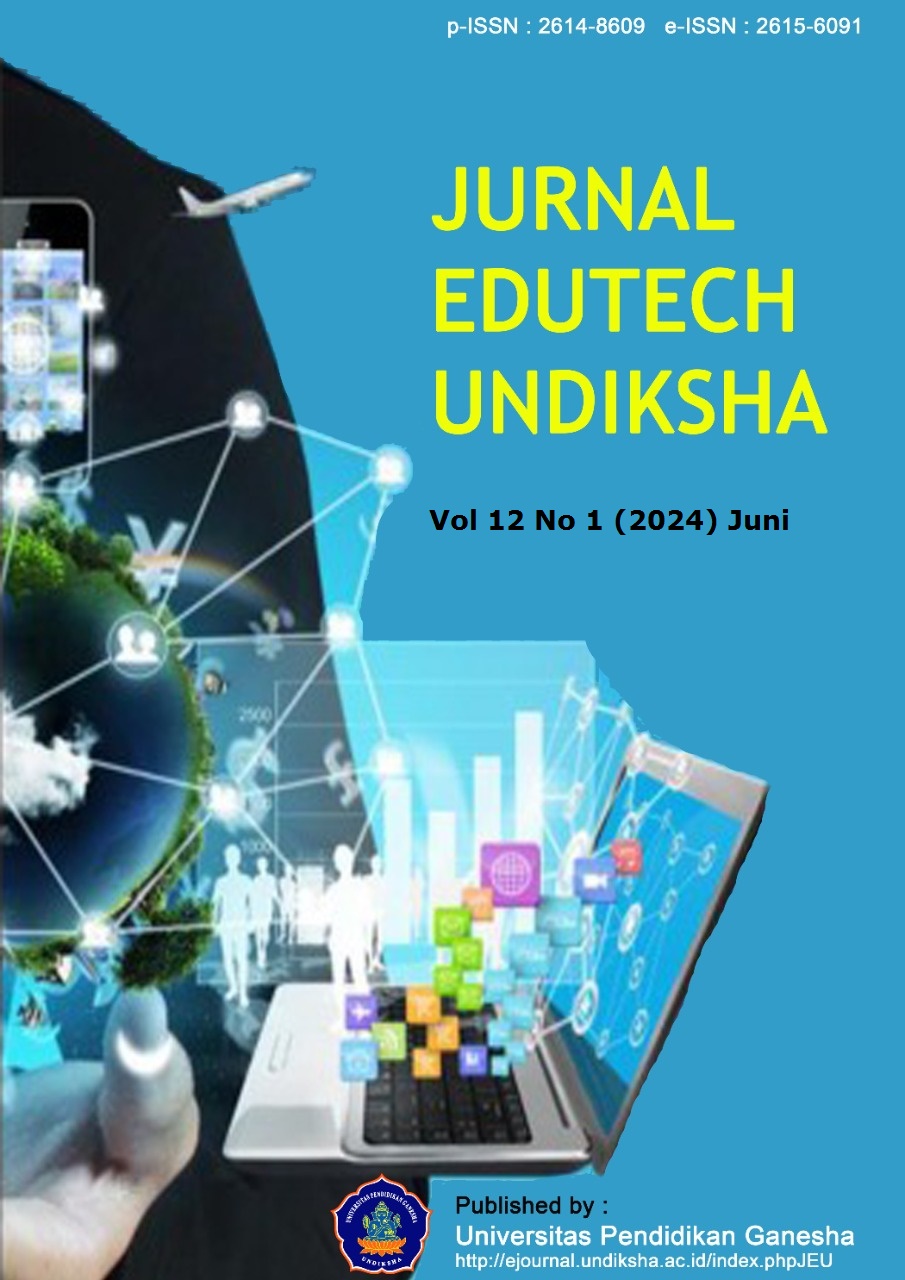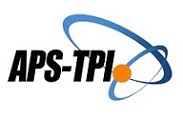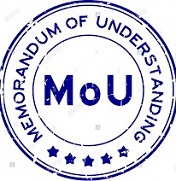Community-Based Web-Learning Media for Disaster Mitigation Understanding of University Students
DOI:
https://doi.org/10.23887/jeu.v12i1.66137Keywords:
web-learning, community, understanding, disaster mitigationAbstract
Indonesia, disasters frequently occur, so a good understanding of disaster mitigation is needed. Researchers have developed a learning innovation in previous research to increase students' understanding of disaster mitigation. This innovation is in the form of community-based web-learning. This web learning has been declared suitable for use. Further studies are needed to determine the impact on students' understanding of disaster mitigation. This research aims to analyze the effect of community-based web-learning on higher education students' understanding of disaster mitigation. This research uses a quasi-experimental design using a non-equivalent control-group design. The research sample consisted of 200 university students. Students' understanding of disaster mitigation is measured using an essay test. The data analysis process uses the SPSS 26 application, including descriptive tests, normality tests, homogeneity tests, paired sample t-tests, and independent t-tests. The research results found a significant difference in the average understanding of disaster mitigation for university students who studied using community-based web-learning media and those who studied using conventional learning models. Students who use web-based learning have a higher average than those who study in conventional classes. This result proves that community-based web learning can increase higher education students' understanding of disaster mitigation.
References
Abbas, J. (2021). Crisis management, transnational healthcare challenges and opportunities: The intersection of COVID-19 pandemic and global mental health. Research in Globalization, 3, 100037. https://doi.org/10.1016/j.resglo.2021.100037. DOI: https://doi.org/10.1016/j.resglo.2021.100037
Abbas, J., Aman, J., Nurunnabi, M., & Bano, S. (2019). The impact of social media on learning behavior for sustainable education: Evidence of students from selected universities in Pakistan. Sustainability (Switzerland), 11(6), 1–23. https://doi.org/10.3390/su11061683. DOI: https://doi.org/10.3390/su11061683
Abdurrahmansyah, A., Sugilar, H., Ismail, I., & Warna, D. (2022). Online Learning Phenomenon: From the Perspective of Learning Facilities, Curriculum, and Character of Elementary School Students. Education Sciences, 12(8). https://doi.org/10.3390/educsci12080508. DOI: https://doi.org/10.3390/educsci12080508
Alkadri, R., & Fauzi, A. (2021). Practicality of high school physics e-book integrated materials of meteor fall disaster mitigation based on guided inquiry model assisted google classroom. Journal of Physics: Conference Series, 1876(1). https://doi.org/10.1088/1742-6596/1876/1/012061. DOI: https://doi.org/10.1088/1742-6596/1876/1/012061
Apriyanti, W. (2019). Animasi Edukasi Kesiapsiagaan Gempa Bumi Sebagai Sumber Literasi Bencana. Jurnal Kebijakan Pendidikan, 8(2), 123–132. https://conference.binadarma.ac.id/index.php/semnastik/article/view/939.
Atmojo, S. E. (2021). Natural Disaster Mitigation on Elementary School Teachers: Knowledge, Attitude, and Practices. JPI (Jurnal Pendidikan Indonesia), 10(1), 12–22. https://doi.org/10.23887/jpi-undiksha.v10i1.25060. DOI: https://doi.org/10.23887/jpi-undiksha.v10i1.25060
Basyoni, A., Bee, M., S., H., Seng, G., & H. (2020). The effectiveness of using students’ created digital storytelling in enhancing Saudi ninth graders’ critical listening skills. Journal of Education and Social Sciences, 16(1), 58–72. https://doi.org/https://www.jesoc.com/wp-content/uploads/2020/12/JESOC16-030.pdf.
Dharma, I. M. A. (2019). Pengembangan Buku Cerita Anak Bergambar Dengan Insersi Budaya Lokal Bali Terhadap Minat Baca Dan Sikap Siswa Kelas V Sd Kurikulum 2013. Journal for Lesson and Learning Studies, 2(1), 53–63. https://doi.org/10.23887/jlls.v2i1.17321. DOI: https://doi.org/10.23887/jlls.v2i1.17321
Dwi Saputra, A., Nurul Fauziah, F., Suwandi, S., & Artikel, S. (2022). Pemanfaatan materi ajar bahasa Indonesia bermuatan kearifan lokal di SMA Negeri 1 Karanganyar (Utilization of Indonesian language teaching materials containing local wisdom at SMA Negeri 1 Karanganyar. KEMBARA: Jurnal Keilmuan Bahasa, Sastra, Dan Pengajarannya, 8(2), 335–348. https://doi.org/http://ejournal.umm.ac.id/index.php/kembara. DOI: https://doi.org/10.22219/kembara.v8i2.21726
Harlan, T. (2020). Green development or greenwashing? A political ecology perspective on China’s green beltand road. In Eurasian Geography and Economics. https://doi.org/10.1080/15387216.2020.1795700. DOI: https://doi.org/10.1080/15387216.2020.1795700
Jang, J., Ko, Y., Shin, W. S., & Han, I. (2021). Augmented Reality and Virtual Reality for Learning: An Examination Using an Extended Technology Acceptance Model. IEEE Access, 9, 6798–6809. https://doi.org/10.1109/ACCESS.2020.3048708. DOI: https://doi.org/10.1109/ACCESS.2020.3048708
Kaufmann, D. (2018). Reflection: Benefits of Gamification in Online Higher Education. Journal of Instructional Research, 7(1), 125–132. https://doi.org/10.9743/jir.2018.12. DOI: https://doi.org/10.9743/JIR.2018.12
Lin., & Wang, T.-H. (2017). Implementation of Personalized E-Assessment for Remedial Teaching in an E-Learning Environment. Eurasia Journal of Mathematics, Science and Technology Education, 13(4), 1045–1058. https://doi.org/10.12973/eurasia.2017.00657a. DOI: https://doi.org/10.12973/eurasia.2017.00657a
Martín-Gutiérrez, J., Mora, C. E., Añorbe-Díaz, B., & González-Marrero, A. (2017). Virtual Technologies Trends in Education. EURASIA Journal of Mathematics, Science and Technology Education, 13(2), 469–486. https://doi.org/10.12973/eurasia.2017.00626a. DOI: https://doi.org/10.12973/eurasia.2017.00626a
Mphasha, L. E. (2022). Folktales reveal the cultural values of the community: A SWOT (strengths, weaknesses, opportunities, and threats) analysis. Anthropologist, 19(1), 295–302. https://doi.org/10.1080/09720073.2015.11891663. DOI: https://doi.org/10.1080/09720073.2015.11891663
Nieto-Escamez, F. A., & Roldán-Tapia, M. D. (2021). Gamification as Online Teaching Strategy During COVID-19: A Mini-Review. Frontiers in Psychology, 12(May), 1–9. https://doi.org/10.3389/fpsyg.2021.648552. DOI: https://doi.org/10.3389/fpsyg.2021.648552
Noviana, E., Kurniaman, O., & Affendi, N. (2020). KOASE: Disaster Mitigation Learning Media in Elementary School. Tadris: Jurnal Keguruan Dan Ilmu Tarbiyah, 5(1), 11–25. https://doi.org/10.24042/tadris.v5i1.5183. DOI: https://doi.org/10.24042/tadris.v5i1.5183
Nurcahyo, M. A. (2020). Penggunaan multimedia interaktif untuk meningkatkan literasi digital siswa SMP pada mata pelajaran IPA. Jurnal Pendidikan Informatika Dan Sains, 9(2), 132–138. https://doi.org/10.31571/saintek.v9i2.2077. DOI: https://doi.org/10.31571/saintek.v9i2.2077
Purmadi, A., & Surjono, H. D. (2016). Pengembangan Bahan Ajar Berbasis Web Berdasarkan Gaya Belajar Siswa Untuk Mata Pelajaran Fisika. Jurnal Inovasi Teknologi Pendidikan, 3(2), 151–165. https://doi.org/10.21831/jitp.v3i2.8285. DOI: https://doi.org/10.21831/jitp.v3i2.8285
Ramadhan, S., Sukma, E., & Indriyani, V. (2019). Environmental education and disaster mitigation through language learning. IOP Conference Series: Earth and Environmental Science, 314(1), 0–9. https://doi.org/10.1088/1755-1315/314/1/012054. DOI: https://doi.org/10.1088/1755-1315/314/1/012054
Rambe, R. N. K. (2018). Penerapan Strategi Index Card Match Untuk Meningkatkan Hasil Belajar Siswa Pada Mata Pelajaran Bahasa Indonesia. Jurnal Tarbiyah : Jurnal Ilmiah Kependidikan, 25(1), 93–124. https://doi.org/10.30829/tar.v25i1.237. DOI: https://doi.org/10.30829/tar.v25i1.237
Reuge, N., Jenkins, R., Brossard, M., Soobrayan, B., Mizunoya, S., Ackers, J., Jones, L., & Taulo, W. G. (2021). Education response to COVID 19 pandemic, a special issue proposed by UNICEF: Editorial review. International Journal of Educational Development, 87, 102485. https://doi.org/10.1016/j.ijedudev.2021.102485. DOI: https://doi.org/10.1016/j.ijedudev.2021.102485
Sakurai, A., Sato, T., & Murayama, Y. (2020). Impact evaluation of a school-based disaster education program in a city affected by the 2011 great East Japan earthquake and tsunami disaster. International Journal of Disaster Risk Reduction, 47(March), 101632. https://doi.org/10.1016/j.ijdrr.2020.101632. DOI: https://doi.org/10.1016/j.ijdrr.2020.101632
Samanta, S., Pal, D. K., & Palsamanta, B. (2018). Flood susceptibility analysis through remote sensing, GIS and frequency ratio model. Applied Water Science, 8(2). https://doi.org/10.1007/s13201-018-0710-1. DOI: https://doi.org/10.1007/s13201-018-0710-1
Sholihah, Q., Kuncoro, W., Wahyuni, S., Puni Suwandi, S., & Dwi Feditasari, E. (2020). The analysis of the causes of flood disasters and their impacts in the perspective of environmental law. IOP Conference Series: Earth and Environmental Science, 437(1). https://doi.org/10.1088/1755-1315/437/1/012056. DOI: https://doi.org/10.1088/1755-1315/437/1/012056
Smeda, N., Dakich, E., & Sharda, N. (2014). The effectiveness of digital storytelling in the classrooms: a comprehensive study. Smart Learning Environments, 1(1), 1–21. https://doi.org/10.1186/s40561-014-0006-3. DOI: https://doi.org/10.1186/s40561-014-0006-3
Suarmika, P. E., Putu Arnyana, I. B., Suastra, I. W., & Margunayasa, I. G. (2022). Reconstruction of disaster education: The role of indigenous disaster mitigation for learning in Indonesian elementary schools. International Journal of Disaster Risk Reduction, 72, 102874. https://doi.org/10.1016/j.ijdrr.2022.102874. DOI: https://doi.org/10.1016/j.ijdrr.2022.102874
Thyer, B. A. (2012). Quasi-Experimental Research Design. Oxford University Press, Inc. DOI: https://doi.org/10.1093/acprof:oso/9780195387384.001.0001
Verlenden, J. V, Pampati, S., Rasberry, C. N., Liddon, N., Hertz, M., & Kilmer, G. (2021). Association of Children ’ s Mode of School Instruction with Child and Parent Experiences and Well-Being During the COVID-19 Pandemic — COVID. MMWR. Morbidity and Mortality Weekly Report, 70(11), 369–376. https://www.ncbi.nlm.nih.gov/pmc/articles/PMC7976614/. DOI: https://doi.org/10.15585/mmwr.mm7011a1
Wardana, S., Herdiansyah, H., & Wicaksono, A. (2021). The actualization of student’s disaster preparedness at the elementary and secondary education level of disaster-aware school. IOP Conference Series: Earth and Environmental Science, 683(1), 012034. https://doi.org/10.1088/1755-1315/683/1/012034. DOI: https://doi.org/10.1088/1755-1315/683/1/012034
Winatha, K. R., Naswan, S., & Ketut, A. (2018). Pengembangan E-modul Interaktif Berbasis Proyek Pada Mata Pelajaran Simulasi Digital Kelas X di SMK TI Bali Global Singaraja. Jurnal Teknologi Pembelajaran Indonesia, 8(1). https://doi.org/10.23887/jtpi.v8i1.2238. DOI: https://doi.org/10.23887/jtpi.v8i1.2238
Yu, H., Liu, P., Huang, X., & Cao, Y. (2021). Teacher Online Informal Learning as a Means to Innovative Teaching During Home Quarantine in the COVID-19 Pandemic. Frontiers in Psychology, 12(June), 1–12. https://doi.org/10.3389/fpsyg.2021.596582. DOI: https://doi.org/10.3389/fpsyg.2021.596582
Downloads
Published
How to Cite
Issue
Section
License
Copyright (c) 2023 Tengku Muhammad Sahudra, Ary Kiswanto Kenedi, Asnawi Asnawi, Imam Hadi Sutrisno, Teguh Ardiansyah, Ilpa Ardani Br Sitepu

This work is licensed under a Creative Commons Attribution-ShareAlike 4.0 International License.
Authors who publish with the Jurnal Edutech Undiksha (JEU) agree to the following terms:
- Authors retain copyright and grant the journal the right of first publication with the work simultaneously licensed under an Attribution-ShareAlike 4.0 International (CC BY-SA 4.0) that allows others to share the work with an acknowledgment of the work's authorship and initial publication in this journal.
- Authors are able to enter into separate, additional contractual arrangements for the non-exclusive distribution of the journal's published version of the work (e.g., post it to an institutional repository or publish it in a book), with an acknowledgment of its initial publication in this journal.
- Authors are permitted and encouraged to post their work online (e.g., in institutional repositories or on their website) prior to and during the submission process, as it can lead to productive exchanges, as well as earlier and greater citation of published work. (See The Effect of Open Access)








